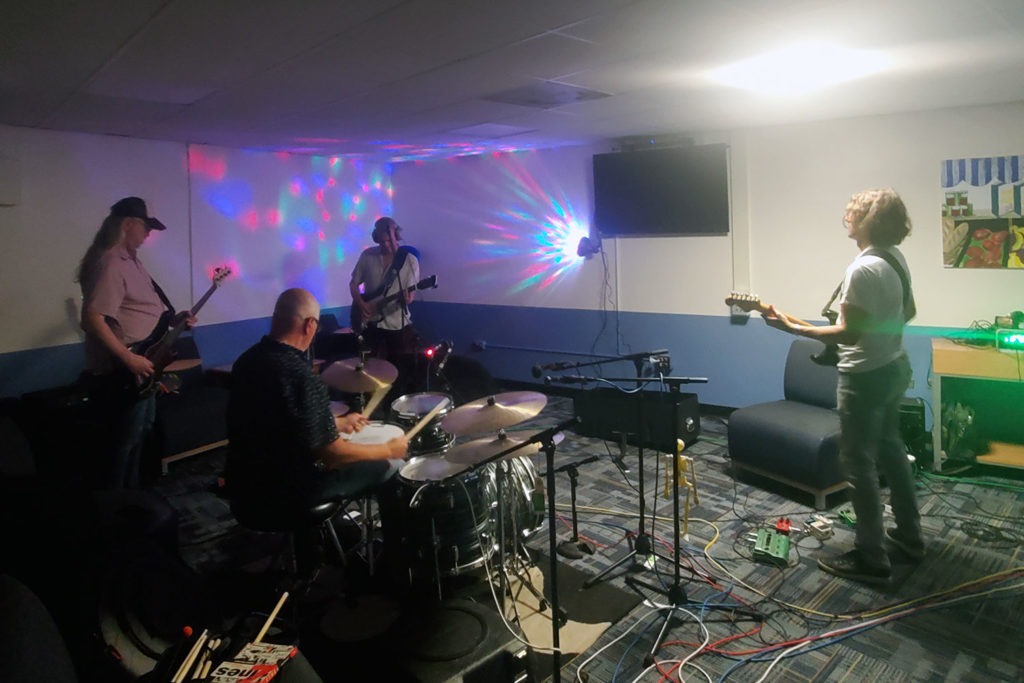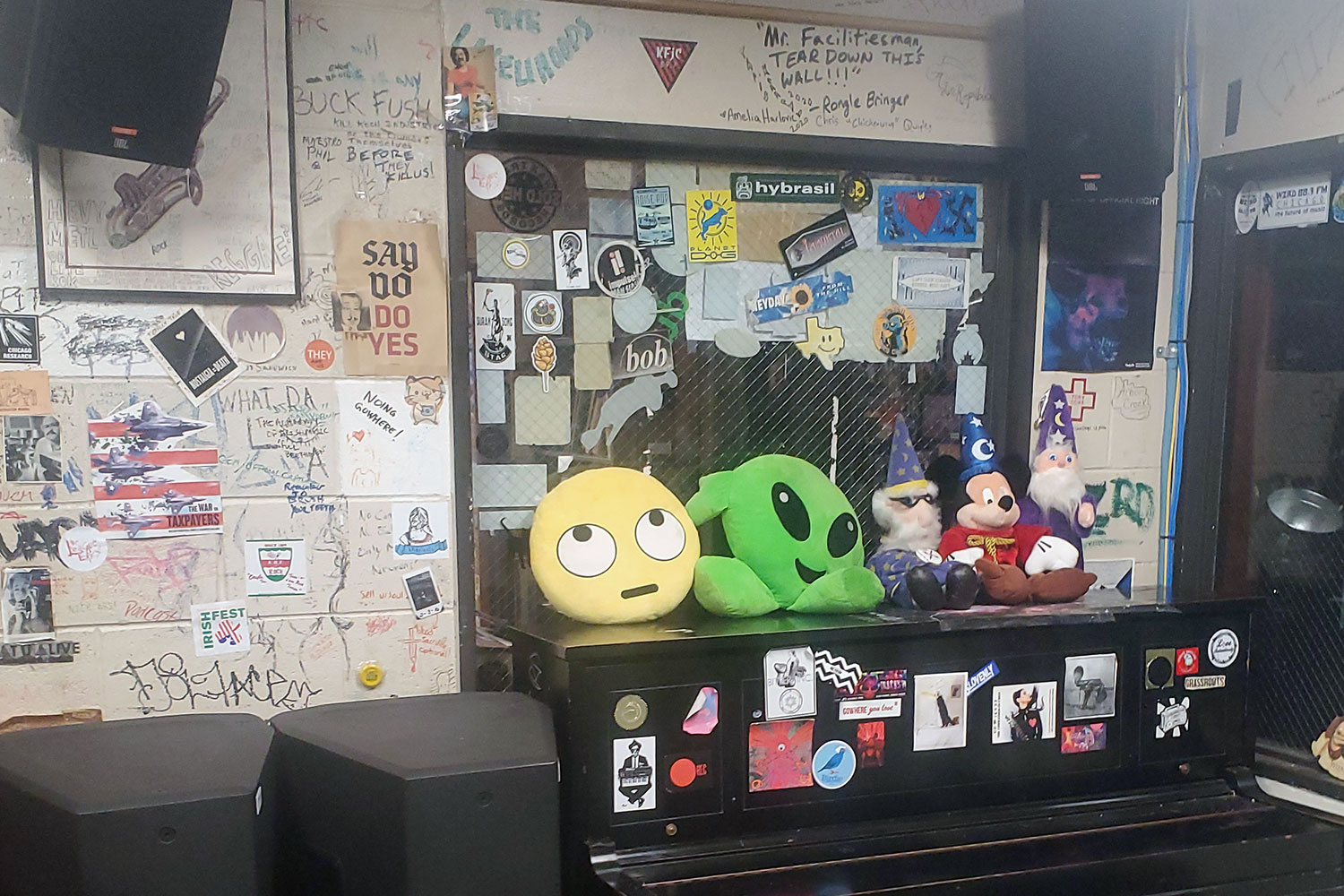It’s eight-thirty in the evening, and we’re still waiting for the band. I’m in the studios of WZRD, the student-run radio station at Northeastern Illinois University, with Alejandro and Rick, the producer and chief engineer of “Thursday Night Live,” a weekly in-studio jam. Alejandro and Rick don’t want to give out their last names, to preserve the mystique of underground radio. Also, this is Tuesday night, not Thursday, but that’s OK, too. WZRD’s motto is “freeform radio.”
WZRD’s studios are, literally, underground: in the basement of NEIU’s Student Union, an institutional educational building of 1960s or ’70s vintage. Painted on the cinderblock wall is a fantasy castle, sticking out its tongue. The door is plastered over with decades of musical mementos, from KMFDM to Naked Raygun. And sitting on a scuffed piano are three stuffed wizards, a nod to the station’s nickname.
WZRD is a 100-watt station, whose 88.3 FM terrestrial signal can be heard from O’Hare to the lake and Evanston to the Loop, but it played an important role in Chicago’s musical history as the first local station to broadcast punk rock. In the 1970s, the station’s musical director, Terry Nelson, “brought punk rock to the city,” says Alejandro. “This was the only station that would touch it. It was another ten years before WXRT played it.”
Nelson recorded a live Gang of Four show and played it on his “Sunday Morning Nightmare” show. His 1979 tapes of England’s The Only Ones were recently released as an album. The Wizard was hip to Chicago’s alternative music scene, too. The Smashing Pumpkins showed up at NEIU on March 16, 1989 — before they signed a record deal, before Billy Corgan shaved his head. They played a cover of the Velvet Underground’s “Venus in Furs.” It’s on YouTube.
The band we’re waiting for tonight is Outronaut, which Alejandro describes as “instrumental surf rock.” In the meantime, the Wizard is broadcasting its usual eclectic playlist. A skronky Art Ensemble of Chicago jam might be followed by a Woody Guthrie Dust Bowl ballad, which might be followed by an Etta James torch song. The Wizard does not play ear candy.
“It’s a little metal, a little jazz,” says Alejandro, who began working at NEIU as a student, and remained as a volunteer after graduating. “Back in the day, we had the Mongolian monk stuff before it got popular. There’s no Top 40. If we play Black Sabbath, we’re not going to be playing ‘Iron Man.’ If we play the Ramones, it’s not going to be ‘Blitzkrieg Bop.’”
Thanks to the internet, the Wizard’s reach has expanded from the North Side of Chicago to the entire world. The station even has a fan in Poland. It is still, however, a rather hip pleasure. Since WZRD is not a commercial radio station, it doesn’t track listenership, but when a “Thursday Night Live” band asked how many people were streaming the show, Alejandro checked the counter: 100.

“Wizard always tried to program to curious folks, not just people who listen to what they want to hear,” says Rick, a retired NEIU staff member who has been involved with the station since it first went on the air in 1974, debuting with “Kick Out the Jams,” by the MC5.
Outronaut finally arrives around nine o’clock, an hour before the show. Alejandro and Rick help the band set up in front of the Pepsi and Aquafina machines in an empty student break room, unspooling multi-colored cables, connecting guitars to amps. Although WZRD is officially a student station, everyone in the room is a Gen Xer or a Baby Boomer. The youngest member of Outronaut is 47. That seems to be the Wizard’s demographic, though.
“It’s my all-time favorite radio station,” raves Outronaut guitarist Steve Gerlach. “I’ll hear free-form lectures and eleven-minute space jams and all kinds of stuff. I started listening in 1988, and I played on the station with Phantom Helmsman in 1995 or ’96. We’re all old enough to have been in a million bands.”
Outronaut jams for 40 minutes. On the way off the air, they promote two shows this coming Sunday, one at Lakeview Fest in the afternoon, another at Liar’s Club in the evening. That’s why bands do live radio. I’m no music critic, but I would describe their sound as Dick Dale meets the Grateful Dead. Listen and draw your own conclusions. One thing is for sure: There was nothing else like it on Chicago radio last Tuesday night.



